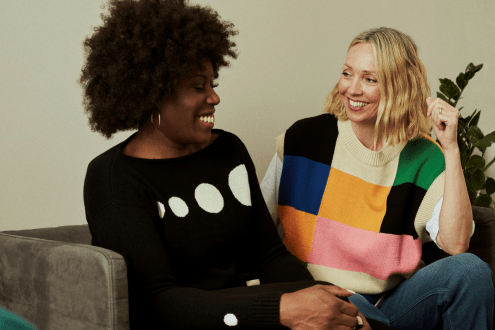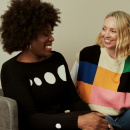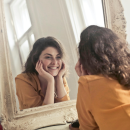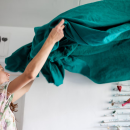Colour therapy: how it can impact your emotions and decisions
Colour can influence our emotions, decisions and behaviours – and represent our beliefs, values and traditions. Rebecca Frank explores the benefits of colour therapy.
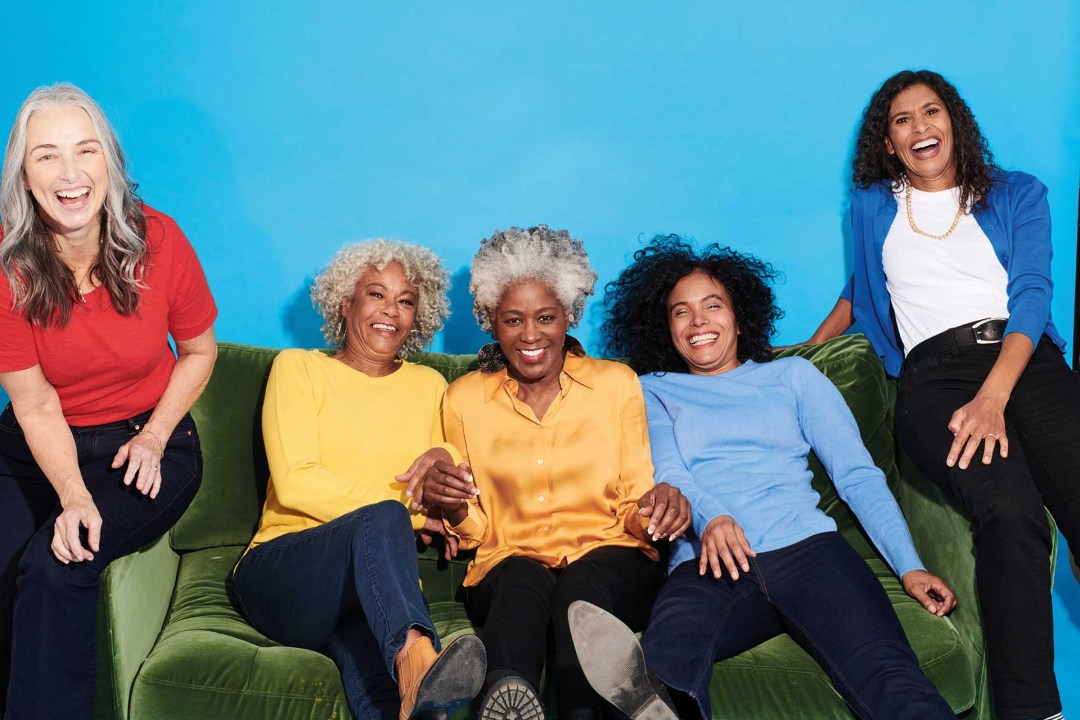
Colour can influence our emotions, decisions and behaviours – and represent our beliefs, values and traditions. Rebecca Frank explores the benefits of colour therapy.
If you’ve ever felt uplifted by the sight of a daffodil, been stopped in your tracks by some colourful street art or energised by a slick of lipstick, then you’ve experienced the impact colour can have on your emotions. With the ability to stir up feelings from joy and hope to calm and nostalgia, colour is a powerful energy source that’s all around us. Increasing our awareness of how different hues affect us can help influence our decisions and how we choose to use colour in everyday life.
Colour therapy expert Momtaz Begum-Hussain is passionate about the power of colour and the way it affects our feelings, mood, and actions. “Colour is light, and light is energy which speaks to us in vibrations,” says Momtaz, referring to how we see colour as a reflection of light through cells in the retina known as cones.
As well as communicating with the area of the brain that forms a visual image, research has shown that when we see light and colour it sends signals to another part of the brain that causes the release of hormones that affect many of the body’s functions from sleep to appetite. This explains how certain colours can induce different mental states – the colour red has been shown to raise heart rate and blue to make us feel calmer, for example.
With her bright clothing, colourful hair, and warm smile, Momtaz is a walking example of how colour can affect you and those around you in a positive way. “There’s not a day passes when somebody doesn’t comment on how the bright colours I’m wearing have made them feel happier,” she says. “It’s evidence that seeing colour does something to people – it’s reduced their inhibitions for a start, making them talk to a stranger!”
Aside from the clothes we wear or how we decorate our homes, colour is constantly influencing our decisions and behaviours, often without us noticing. From religious festivals and carnivals to politics and activism, different colours have been used around the world and throughout time to represent beliefs, values, and traditions, firing up energy and arousing emotion. It’s no coincidence that the rainbow was adopted in support for the NHS during the pandemic and has long been used as a symbol for the LGBTQ+ community – the spectrum of colours symbolising hope, positivity, equality, and togetherness.
Colour therapy: understanding colour stereotypes
While we tend to associate certain colours with different moods, our reactions to colour are very personal and often come from early experiences or things we’ve heard. Maybe you were once told that orange didn’t suit you or you associate a certain shade of blue with a school uniform you didn’t like. You might subconsciously favour red or blue depending on your political leanings or the football team you support.
Research shows that colour influences 85% of product choices. Momtaz describes how for a long time she strongly disliked the colour yellow because of nightmares she had as a child that took place in a yellow room. “I stayed away from yellow for a long time, but then I started to need its positivity and vibrancy, so I opened up to it again. Now I really like the colour and have a yellow bookcase and bedspread.”
There are many ways to consciously explore how you feel about different colours. You could start with colour swatches, fabrics or yarn, or by looking around your home or stepping outside and noticing colours and how they make you feel. “It’s all there in front of us and yet we often don’t notice it because we’re preoccupied,” says Momtaz, who calls this practice of seeking out colour, ‘rainbow hunting’ and likes to treat it as an opportunity to switch off from other distractions. “When you notice a colour, think about how it affects you – does it make you feel confident, creative, carefree?”
If you feel drawn to a colour, notice whether you have any of it around you. You might find yourself enjoying the calming effects of a pink flower, for example, only to realise that you don’t have any pink in your life – in your home, wardrobe etc.
“Just because you like a colour doesn’t mean you then have to buy an outfit in that colour,” she explains, “but if you introduce a pop of that colour maybe with a pair of socks, watch strap or nail varnish, it can change how you feel. It might affect how you walk, make you sit up a bit straighter, come across as more confident.”
When you’re working, think about how you want to feel and add some colour to your environment to help. If you have a meeting at 9am and you’re tired, you could maybe choose a red notebook to lift your energy levels. You might find a screensaver image of bluebells or the ocean helps focus your mind if you’ve got a piece of writing to finish or a bunch of yellow tulips makes you feel more positive.
“Bring in colours and feel what’s right but don’t overdo it,” says Momtaz. “A red mug might be good, whereas red walls would be overwhelming.” At the end of the day if you change out of your work clothes into a different colour it can help you relax and make that transition from day to evening, into a different energy space. Make your meals as colourful as possible and you’ll not only get more nutrients, but you’ll have a better appetite too. “The more colours you’re exposed to the more emotions you’ll be able to feel.”
Playing with colour
Using colour in creative activities enables you to enjoy the ritual of making something while also benefiting from the joy of experimenting with different palettes. Angie Parker is an artist who weaves stunning, brightly coloured rugs, blankets, and other textiles mostly by hand from her studio in Bristol. Angie has always been drawn to colour and was inspired while living in India by all the different shades in the markets and sari shops, along with the incredible light and flowers.
When she moved to Bristol, she found herself craving colour and surrounded herself with yarns in every shade that she uses to make her signature vibrant textiles and in her popular workshops. The painted houses she passed each day on lockdown walks with her children inspired her to weave a colourful blanket to “wrap around the people who were having a hard time during the pandemic”. She donates 10 per cent of the cost of her Bristol blanket to the mental health charity, MIND.
Gathering your own collection of colourful objects can provide you with an instant source of colour therapy when you need it. You could try picking a colour for the day or week and record anything you see in that colour – outdoors and around the house. Arrange the things you’ve collected or take a picture, draw or write about them – whichever feels right for you.
In her new book The Year I Stopped to Notice, Miranda Keeling describes something she sees every day with many of her evocative observations including colour. ‘A cat at the window of the house watches the rain fall outside – its large mustard-yellow eyes bright against grey fur.’ ‘A woman wearing a headscarf the colour of freshwater pearls.’
Breaking the rules
When it comes to the colours you wear, Momtaz says we should forget what we think suits us or what colours are meant to go or not and what other people might think. Basically, if a colour makes you feel good, more confident, calmer, or happier – then wear it. “If a colour rule doesn’t work for you, break it. By doing this you’ll step out of your comfort zone and experience a sense of freedom which you can carry over into every aspect of your life,” she says. It’s worth remembering that the colours you choose can bring positivity and joy to others too – and what could be more enjoyable or empowering than that?
READ MORE
